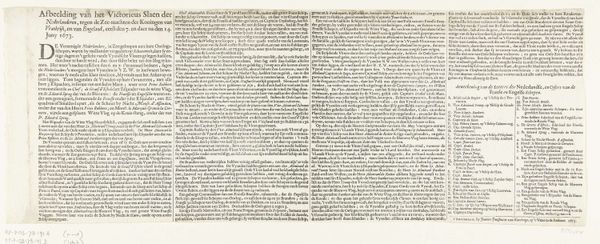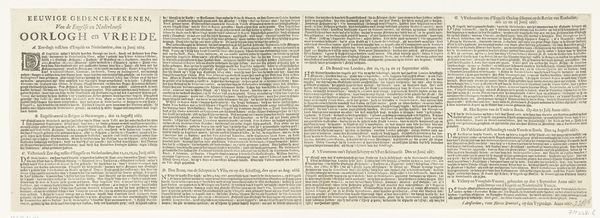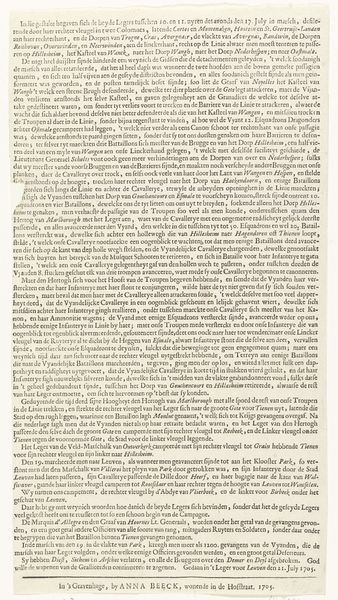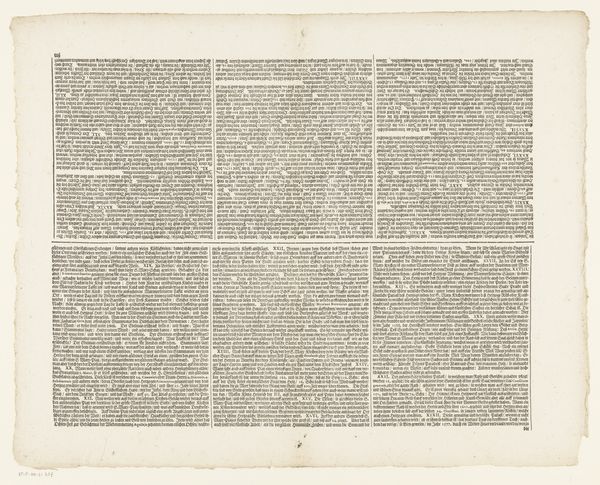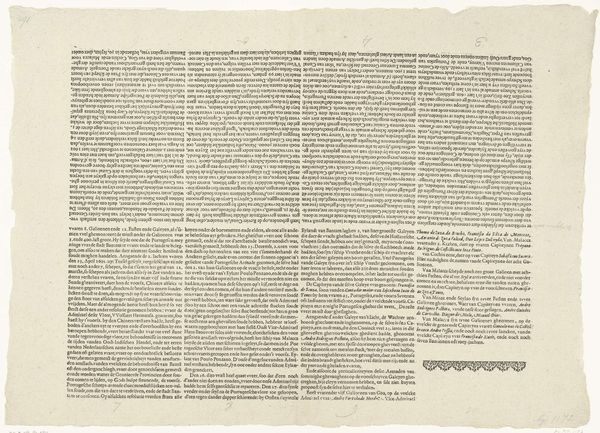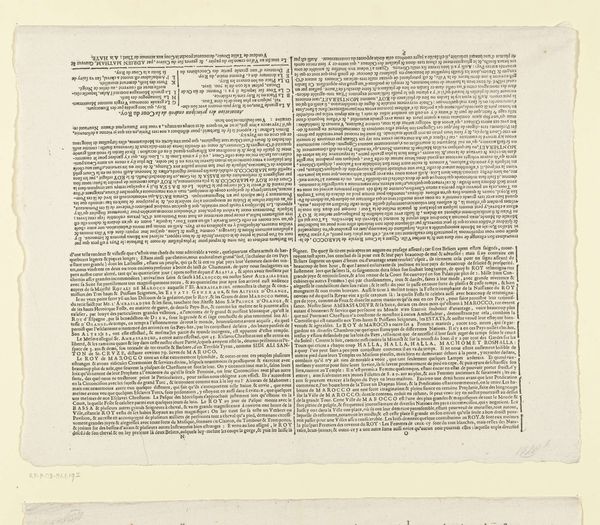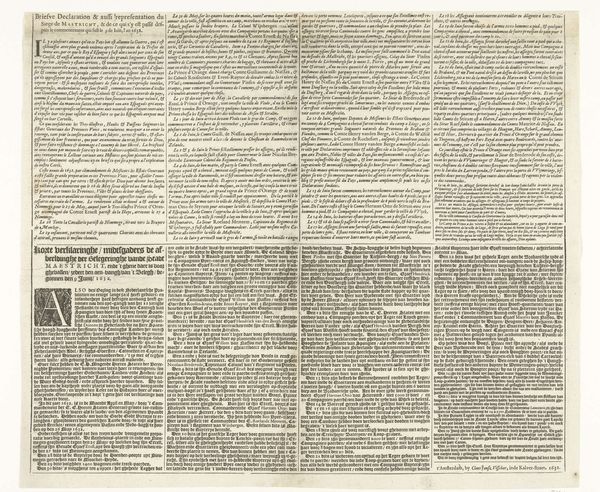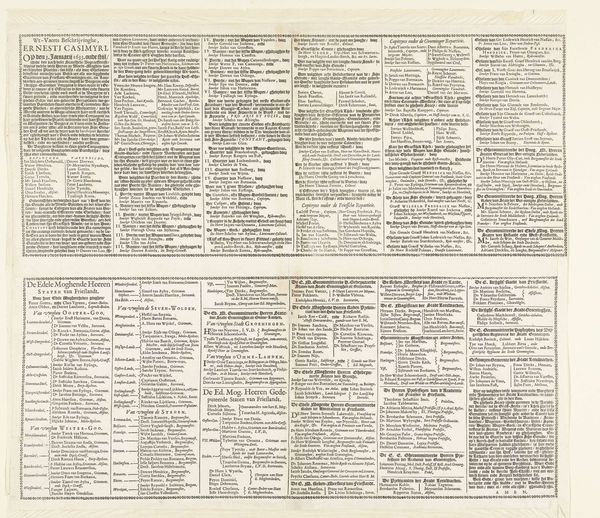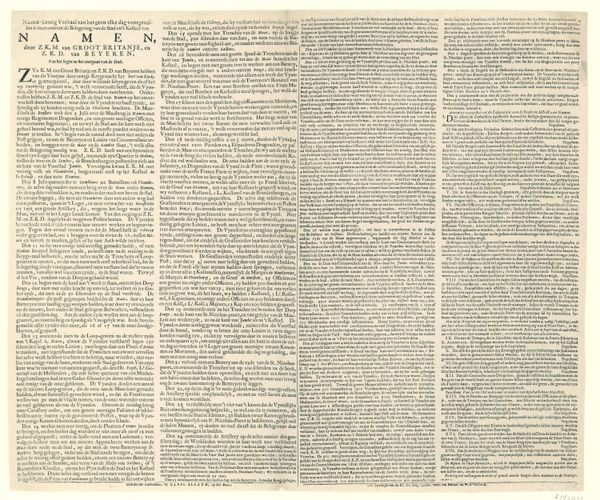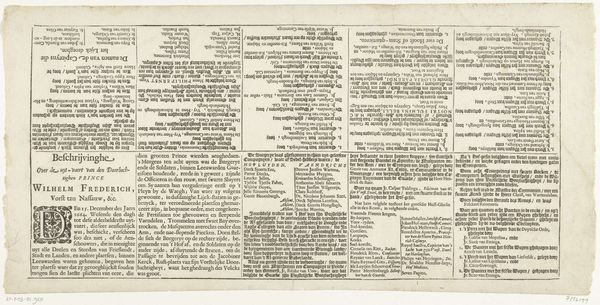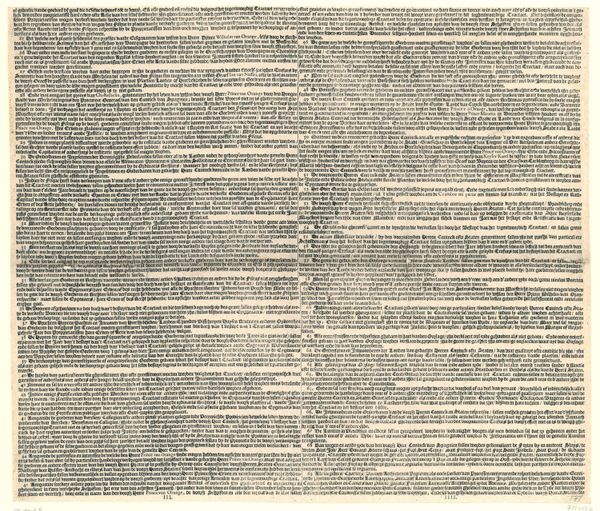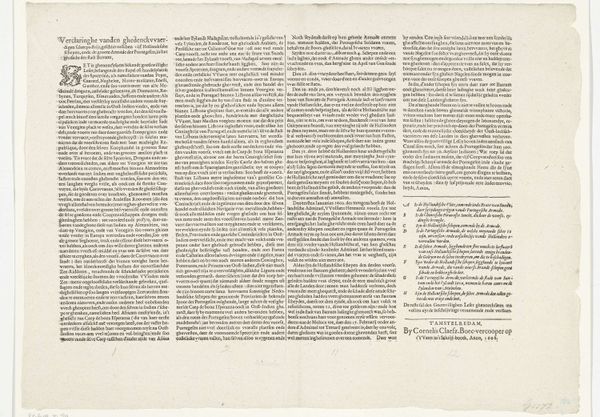
Tekstblad bij de prent van de verovering van de Zilvervloot in de Baai van Matanzas door admiraal Piet Heyn, 1628 1628
0:00
0:00
claesjanszvisscher
Rijksmuseum
print, engraving
#
dutch-golden-age
# print
#
text
#
history-painting
#
engraving
Dimensions: height 283 mm, width 340 mm
Copyright: Rijks Museum: Open Domain
This broadside etching, made by Claes Jansz. Visscher, commemorates Piet Heyn's capture of the Spanish silver fleet in 1628. Though dominated by text, the symbolic act of conquest is present in the detailed descriptions. Consider the "fleet" itself. Ships, throughout history, have symbolized journeys, exploration, and the transport of goods and ideas. But here, it's not just about physical transport. This "silver fleet" carries wealth, a tangible representation of power and dominance. The act of capturing it is a potent symbol of usurping that power. Interestingly, similar symbolic captures appear throughout art history, in Roman Triumphs, or religious scenes where saints overcome evil. This act of "capture" speaks to a primal narrative—the overthrowing of a dominant force. However, these symbols are never static. A ship laden with treasure can evolve to represent freedom, or even oppression, depending on the viewer's perspective. This broadside, through its intricate depiction of conquest, taps into a collective memory of power struggles. And evokes a deep, visceral understanding of victory and defeat.
Comments
No comments
Be the first to comment and join the conversation on the ultimate creative platform.
